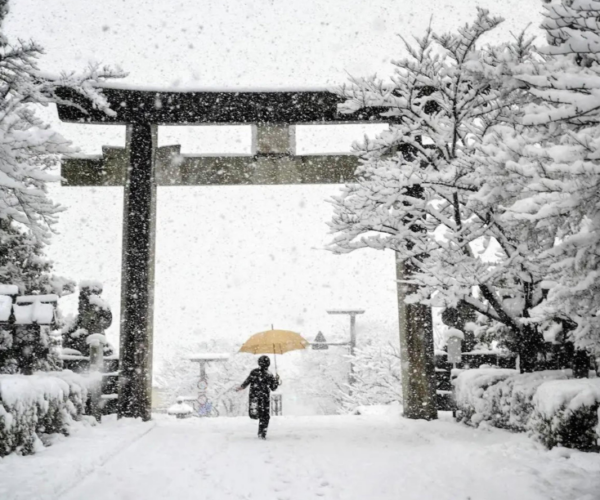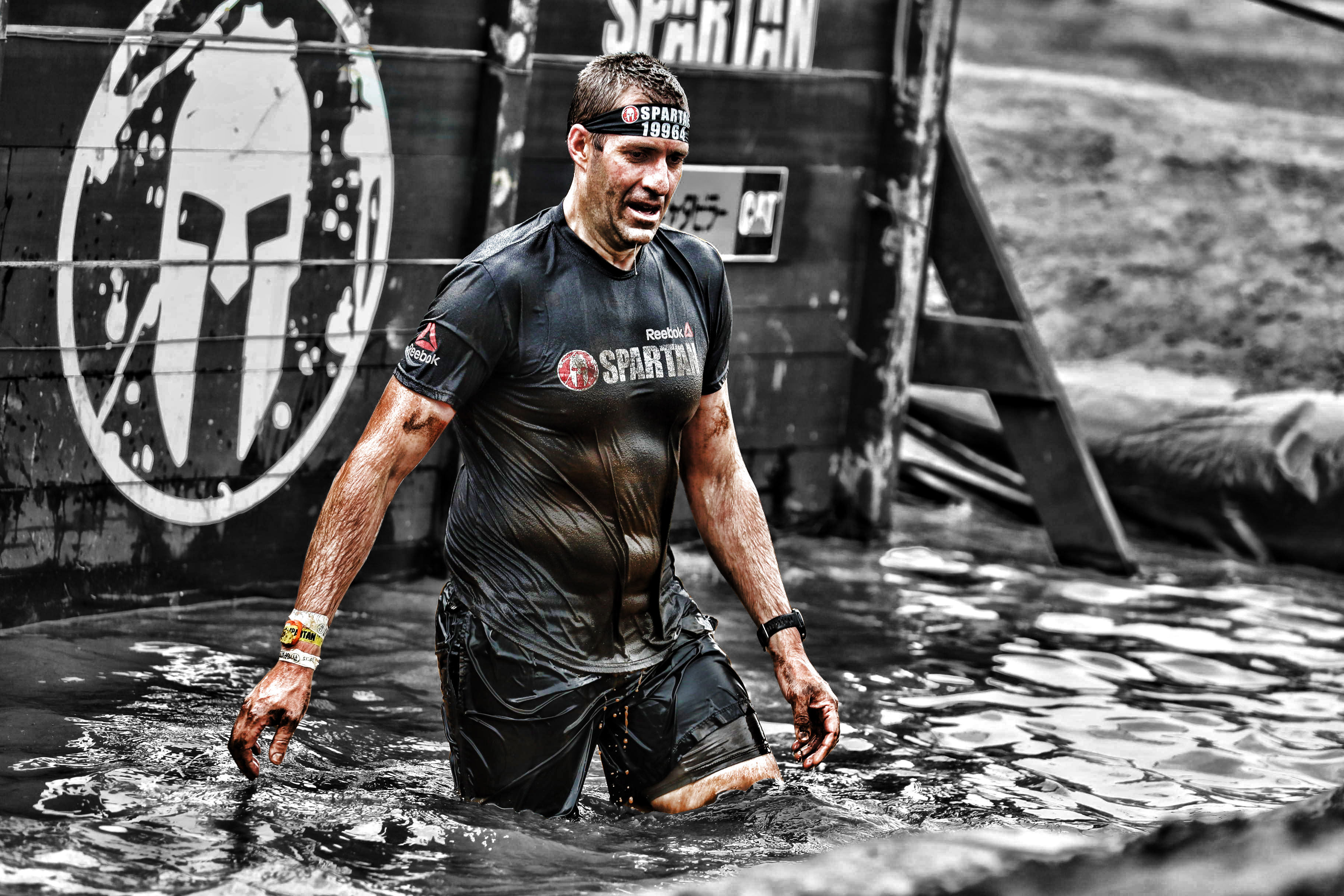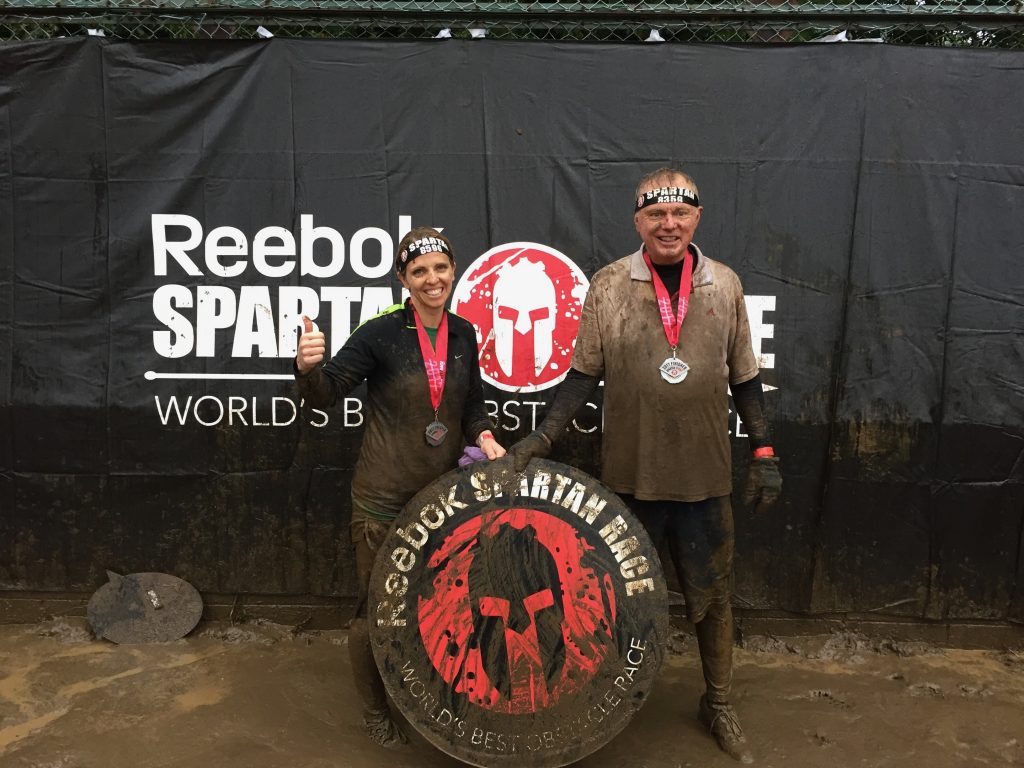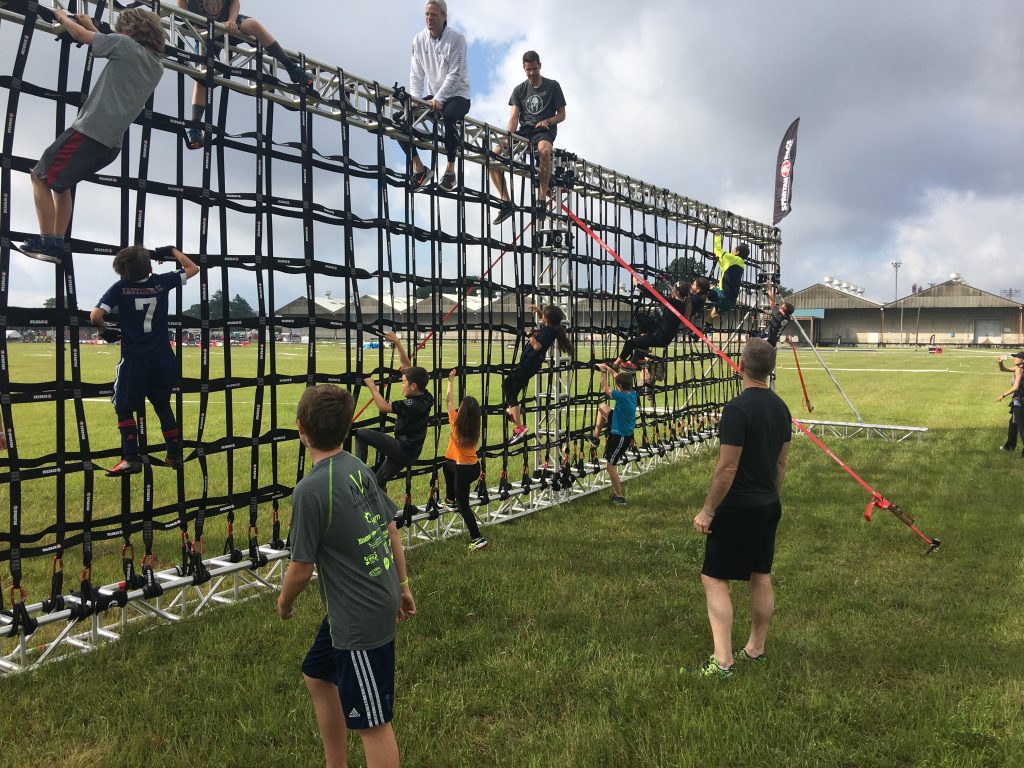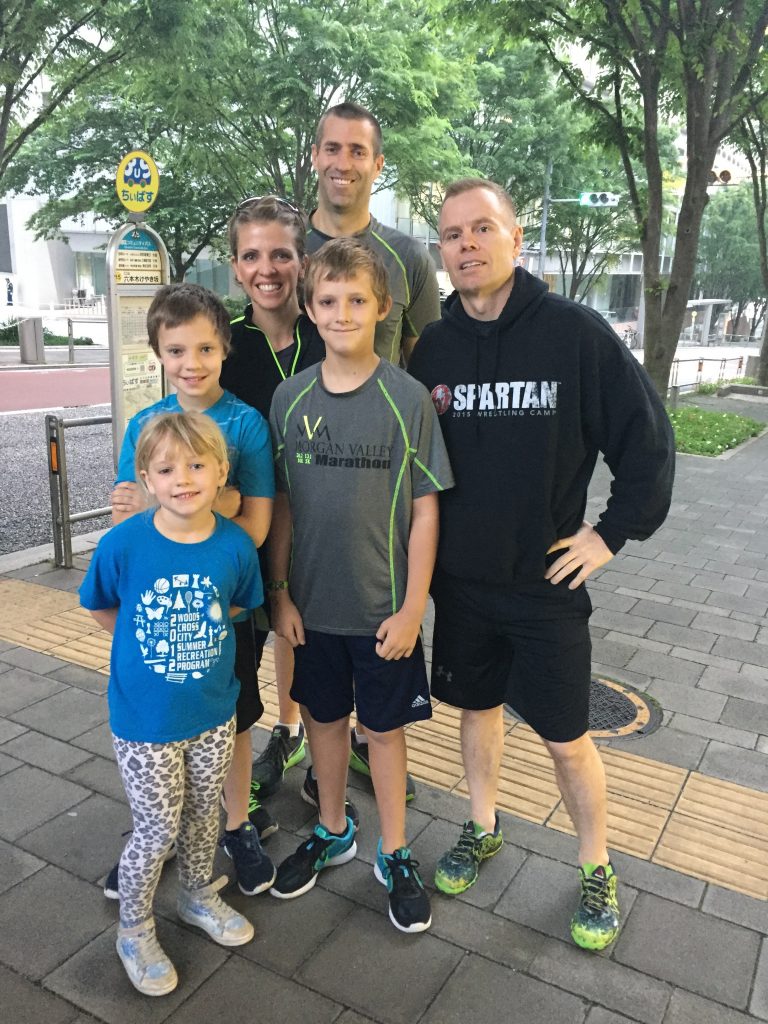This article originally featured in the December 2019 issue of Connect.
Each summer, I travel back to the US to visit family and friends. I enjoy summer in the US as it is a break from my fast paced life in Tokyo, where I have lived for sixteen years. On one particular summer day in 2016, I was with my dad, helping him at his ranch. We were at the top of the property and noticed in the valley below a large number of cars filing in and parking, which was completely out of place for this quiet, hidden valley. On our way home, we drove by and asked what was going on.
“A Spartan race,” the parking attendant told us.
“A what?” we both asked.
Neither of us had ever heard of it before. So we looked it up on the drive home and by the time we reached the house, my dad and I were convinced we wanted to compete. I was determined to take on the challenge even in Japan.
Spartan in Japan
Spartan racing is a relative newcomer to the sporting scene in Japan—it first arrived in May of 2017. The timing was perfect; I immediately signed up. Thus, my induction to Spartan racing was a bit unique as my first race was the very first Spartan even in Japan, held at the military training field in Sagamihara.
In the buildup to the race, I was able to attend a promotional event and hear the founder of Spartan, Joe De Sena, speak. Attendees came to the event dressed in suits, yet Joe came in his jeans and hoodies, and spoke from the heart. He spoke about why and how he started Spartan and and more importantly, the Spartan mindset. Spartan is more about mindset than the physical demands of a race. Of course, one must reach a certain level of physical fitness to compete with confidence, but it is our mindset that drives us to become what we want to be. He spoke of encouraging athletes to face fears and seemingly insurmountable obstacles—and pushing through to conquer them all.
He also talked about toughening up—since we live with the many comforts modern society provides, we sometimes forget our abilities, and what we can physically accomplish and endure. To remind himself of this, he often takes cold showers. Coincidentally, about a week after listening to him talk, the hot water heater went out in my apartment and I suffered through a couple of days of cold showers. “All part of the training,” I reminded myself.
My favourite children’s book was Mr. Tiger Goes Wild by Peter Brown, in which Mr. Tiger, a businessman, gets tired of the confines of city life and decides to strip off his suit and live in the wild. Participating in the Spartan race gave me the same type of catharsis. To be honest, after years of living in Tokyo and adhering to a more formal social and dress code than what I would have followed if I were living in the US, the thought of swimming in mud, climbing walls, and traversing obstacles had its appeal. The Spartan race was a chance to strip away pretenses and expectations, and face down the rugged course. It was OK to bleed, to sweat, and to look like a complete mess.
It is easy to become intimidated when you check out the Spartan website and see photo after photo of men with perfect physiques scaling walls and climbing ropes, but anyone can have a Spartan mindset. It doesn’t matter who you are. When you start the race, it is your determination that will get you across the finish line. Your fellow Spartans in the face are allowed to lend a hand. When you join a Spartan race, you hop the fence to get to the starting line, and then with the other attendees, you scream with passion, “I am Spartan!” You can feel the energy, determination, and courage surrounding you to knock out the course ahead! This is all part of the Spartan way.
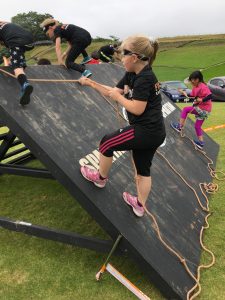
The First Race
As the day of the first race arrived, I must be honest—I was more nervous than excited. In fact, there was a large part of me that was actually dreading the race. I didn’t know what to expect and didn’t have a lot of confidence that I would be able to compete. Fortunately, I had a large group of friends that had also committed to the inaugural Spartan Japan run. We were of many different athletic levels, but as the race started, four of us ended up stuck together throughout the entire race.
It probably took me the first couple of obstacles to get warmed up and after that, I realized something. I realized I was having fun. Sure, it was challenging and I was out of breath and covered in dirt and mud—but it was fun. You bond with your fellow runners when you push them over fences, they drag you over hurdles, and you support and encourage each other along the way. When we reached that finish line and jumped the fire pit, I felt so accomplished! We all did! Since that first run, my husband and I have competed in Spartan races in Japan, Australia and in the US. Yet, no matter where we compete, the energy is the same and I always feel that same sense of accomplishment when I finish.
Spartan for the Family
When we compete, we don’t just limit it to us adults. Our kids join us as well! It is a huge confidence builder for them to master miniature versions of what the tough guys are doing. Just like adults, it gives kids the opportunity to step out of their comfort zone and give it a go. The first race my kids competed in wasn’t even an official kids race. We met Joe and a few other families early in the morning and headed out to the Sagamihara military base for the inaugural Spartan Japan race. Joe led the charge himself. He took the kids out onto the course and had them run the actual obstacles with no mercy because he had high expectations for them. But more than that, it impressed me that Joe was out on the course, breaking it in. He wasn’t tucked up in a press box giving interviews. He wasn’t mingling with VIPs in the head tent. He was out on the course with a group of kids he had just met and showing them what it means to be Spartan.
As a family, we have competed in three different races in Japan—one of which was in the middle of a typhoon. My dad flew to Tokyo to compete with me, and we climbed up muddy slopes and slid down slick mud slides. None of them were official obstacles, but they just reflected the nature of the course race (Not surprisingly, it took days and several rounds of laundry to get the mud out).
Spartan Challenge
Spartan has gained great popularity in Japan over the last few years. But it’s not just Westerners like my family and I competing in Spartan racing—a large number of Japanese compete in various levels. But what they all have in common is a will to push themselves to the limit and see how far they can go. For me, Spartan racing in Japan was a release from the daily stress confinement of city living and a way to just get out there and compete completely covered from head-to-toe in mud. It is quite the experience and accomplishment when you jump that fire pit at the end and receive your medal. Victory at last!
I was lucky enough, as I mentioned before, to meet Joe De Sena when he came to Tokyo. I picked up his book, Spartan Fit!, and had him sign it. On the inside cover with his signature, he wrote, “Bonnie You are a Spartan!” That summed it up. When he signed it, I hadn’t even competed yet. I wasn’t even sure if I would be able to finish the race. But I was thrilled to be a part of a group that encouraged me and told me I could do it.
So if you are looking for a way to get fit, challenge yourself, step outside of social norms, and get a little dirty, Spartan may be a fit for you. It is a chance to just be yourself and see how far you can go. Ask yourself, who are you? If the answer to that question is, “I am Spartan,” then it is time to join a race.
Bonnie Humphrey is the author of the blog Blue Pine Notes. She writes about what life is like in Tokyo as an international resident for the past 16 years. She also shares insight on how to gain more from your travels through seeing beyond what a typical tourist experiences and how to record those journeys through journaling and reflection.
All photos by: Bonnie Humphrey
